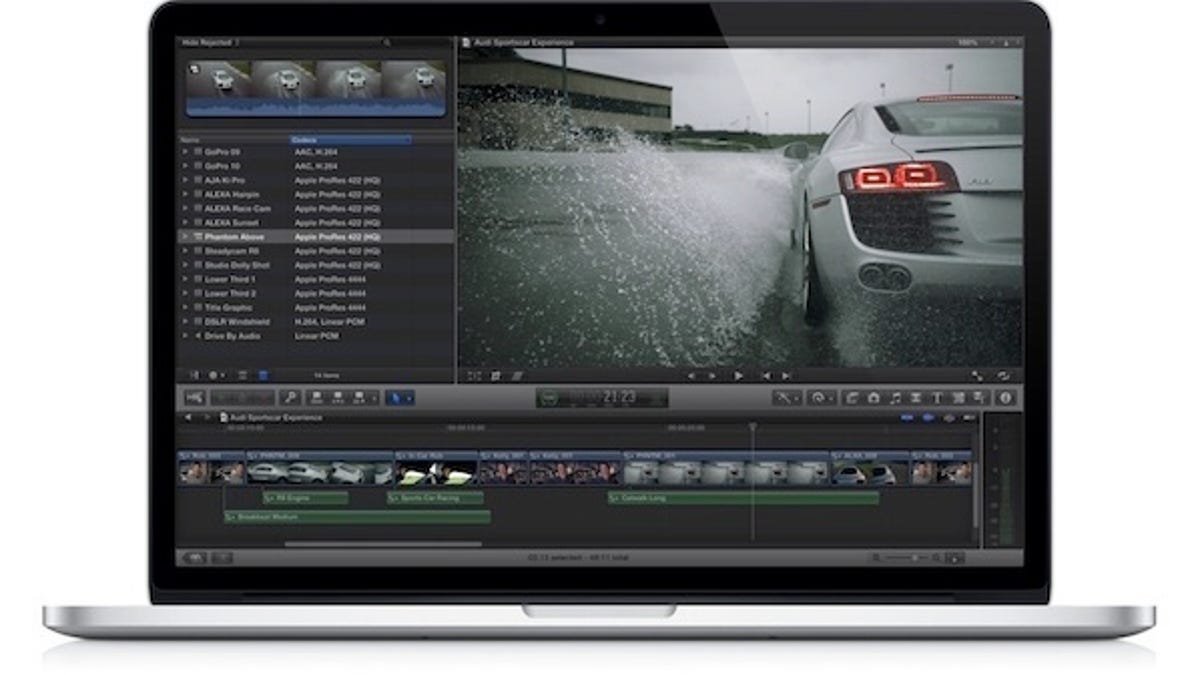Why go Retina? Apple dishes out lots of reasons
Apple, of course, has to justify the $2,200 starting price for a computer. So, it's offering plenty reasons to get a Retina MacBook Pro.

Wondering whether you should part with $2,199 for a MacBook Pro Retina? That is, after all, a lot for a laptop these days.
Apple is trying to make that decision easier by offering lots and lots reasons to buy a MacBook Pro Retina. While professionals may need little convincing, will the average user care?
Here is the list of core benefits Apple is claiming for the Retina MBP:
- Raw specs: 15.4-inch, 2,800x1,800 pixel density, 220 pixels per inch (ppi). By comparison, the third-generation iPad is 2,048x1,536 and 264 ppi.
- Contrast, viewing angle: Higher contrast ratios, deeper blacks, better viewing angle (via IPS tech), reduced glare and reflection (by up to 75 percent). -- Phil Schiller
- OS X updated: OS X Lion has been updated to take full advantage of Retina display. "Reading your mail is like reading fine print," said Schiller. Reality check: It will take awhile for non-Apple applications to go Retina, if indeed lots do.
- Safari: "Surfing the Web can be like experiencing print quality," Schiller said. Sharper than a printed page. Reality check: But that doesn't necessarily apply to other Web browsers.
- iPhoto: "Looking at thumbnail photos in the events view, you'll see a clarity and level of detail you've never seen before," Schiller said.
- Aperture : "Major update" to Aperture. "The whole UI has been updated for Retina...every element...now you're looking at four times the resolution of your photos," Schiller said.
- Final Cut Pro: "Because of the density of the Retina display, that video area in the top right...that is 1080P HD video. That means there are over three million pixels left over for your magnetic timeline...effects. Nine simultaneous streams of "ProRes" video [and] four simultaneous streams of uncompressed video [are possible now]," Schiller said.
- Adobe: Version of Photoshop that takes advantage of Retina coming (Schiller).
- Autodesk: Updated Autocad will allow "a level of detailed work not possible in a notebook before," Schiller said.
Schiller did offer this qualifier, though. "Applications do have to be updated to take advantage of the Retina Display. If they aren't, we can pixel-double them and make them the proper size." Pixel doubling, as most users know, is not a pretty sight.
But getting back to the list above. Similar Retina-justifying arguments were made by Apple for the third-generation iPad Retina. And Apple didn't have much trouble convincing consumers to buy (me included).
Then again, this isn't a $600 iPad. It's a $2,200 computer.
See Apple MacBook Pro video for more details.
Note about resolutions: Under system preferences, Retina MBP display settings have a slider that sets desktop resolutions other than 1440 x 900. "At 1440 x 900 you don't get any increase in usable desktop resolution compared to a standard 15-inch MacBook Pro, but everything is ridiculously crisp," according to Anandtech. "Apple offers 1,680x1,050 and 1,920 x 1,200 scaling options that trade a bit of image quality and performance for added real estate."
Apple already offers -- i.e., has been offering for some time -- a "Hi-Res" 15-inch MacBook Pro with 1,680x1,050 resolution and 17-inch MBP with 1,920x1,200 resolution.

